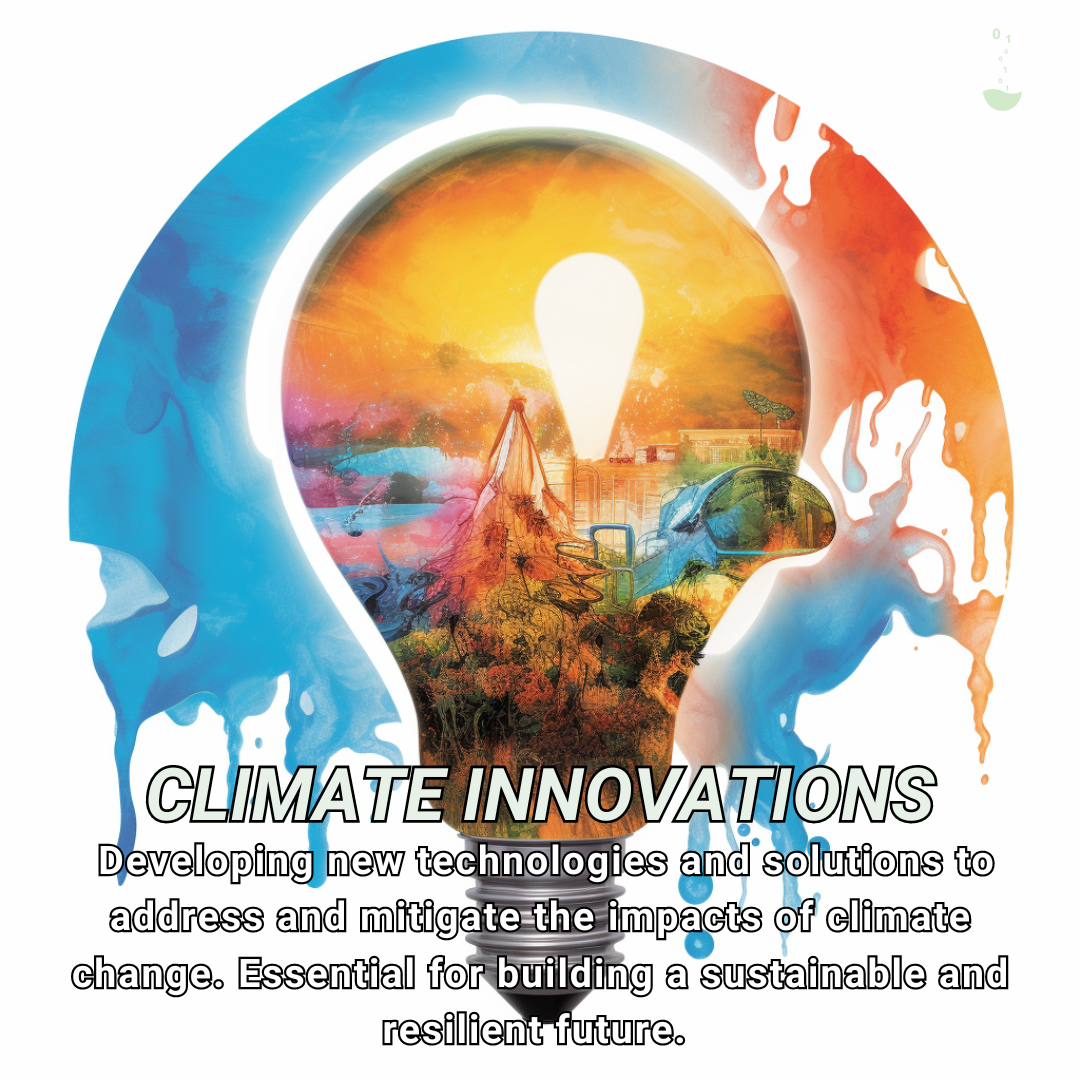November 30, 2023
Climate Change Poster Collection of the Day – Climate Innovations
Book a Demo
Today’s Climate Change Poster Collection highlights Climate innovations. Addressing climate change and creating a resilient economy require the development of new technologies, policies, and investment models. These key components of climate innovation are critical to our future. With inclusive and proactive planning, climate innovation can lead to significant benefits such as job creation, pollution reduction, and improved quality of life.
There are several resources available to guide and monitor progress in this vital area. These include the U.S. Climate Innovation Resource List, the Climate Innovation Blueprint, and the Climate Innovation Funding Tracker. These resources can provide valuable insights and direction for those engaged in the fight against climate change.
Implementing climate programs, employing carbon management strategies, and deploying direct air capture technology are potential ways to achieve net-zero emissions and combat climate change. These strategies, coupled with the right investment and policy support, can significantly contribute to our collective efforts to slow global warming.
Encouraging climate tech innovation and finance is a key legislative goal. Critical pieces of legislation such as the Inflation Reduction Act and the bipartisan infrastructure law can play a significant role in creating a robust climate tech ecosystem. These laws can stimulate innovation and investment in the climate tech sector, creating jobs and reducing environmental impact.
At the international level, Massamba Thioye is leading the UN’s Global Innovation Hub (GIH). Launched at COP26, the GIH aims to increase the effectiveness of climate and sustainability innovation. It addresses four main challenges: the lack of climate and sustainability solutions, limited space for innovation, the traditional focus on technological innovation, and the risk of unused solutions.
Thioye underscores the need for an integrated approach to innovation. This approach should focus on meeting human needs and establishing new value chains that align with climate and sustainability objectives. The GIH’s work is a testament to the power of coordinated, global effort in the face of climate change.
In conclusion, climate innovation is a multidimensional challenge that requires a collective, integrated approach. It is not just about developing new technologies, but also about creating enabling policies and investment models. With the right strategies and resources, we can harness the power of climate innovation to create a sustainable, resilient future.
Discover an inspiring collection of climate change poster.



